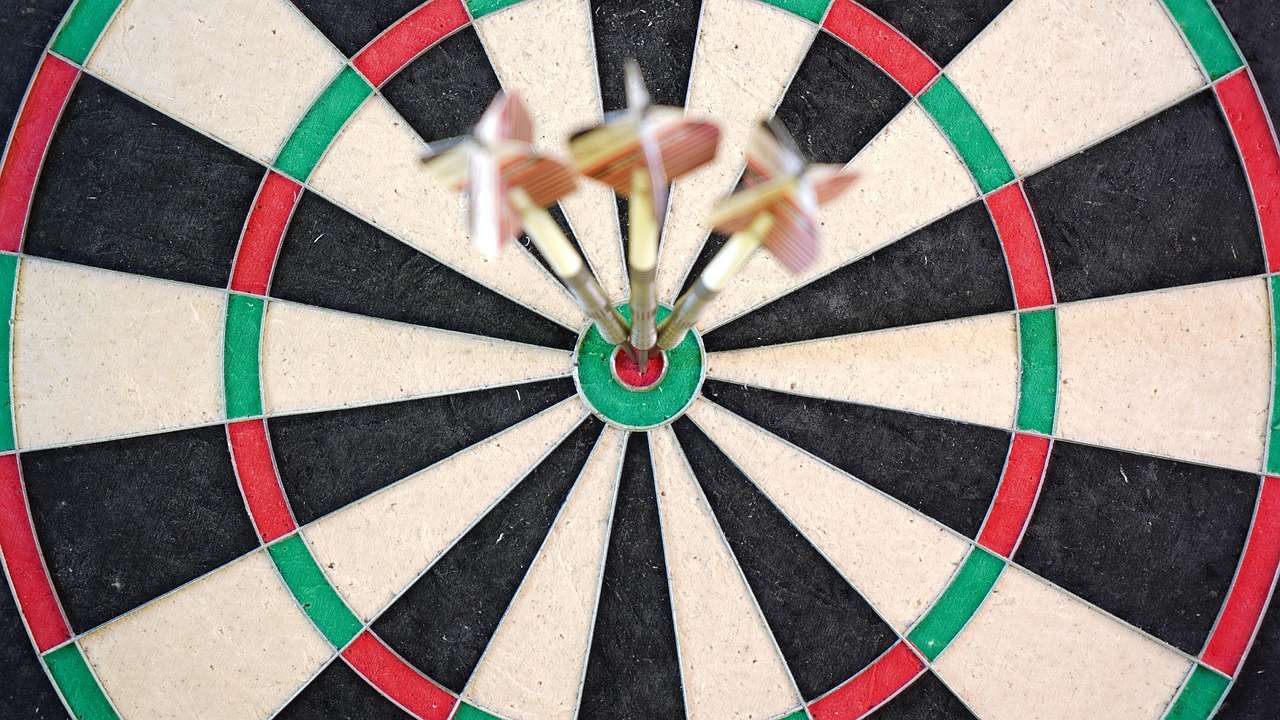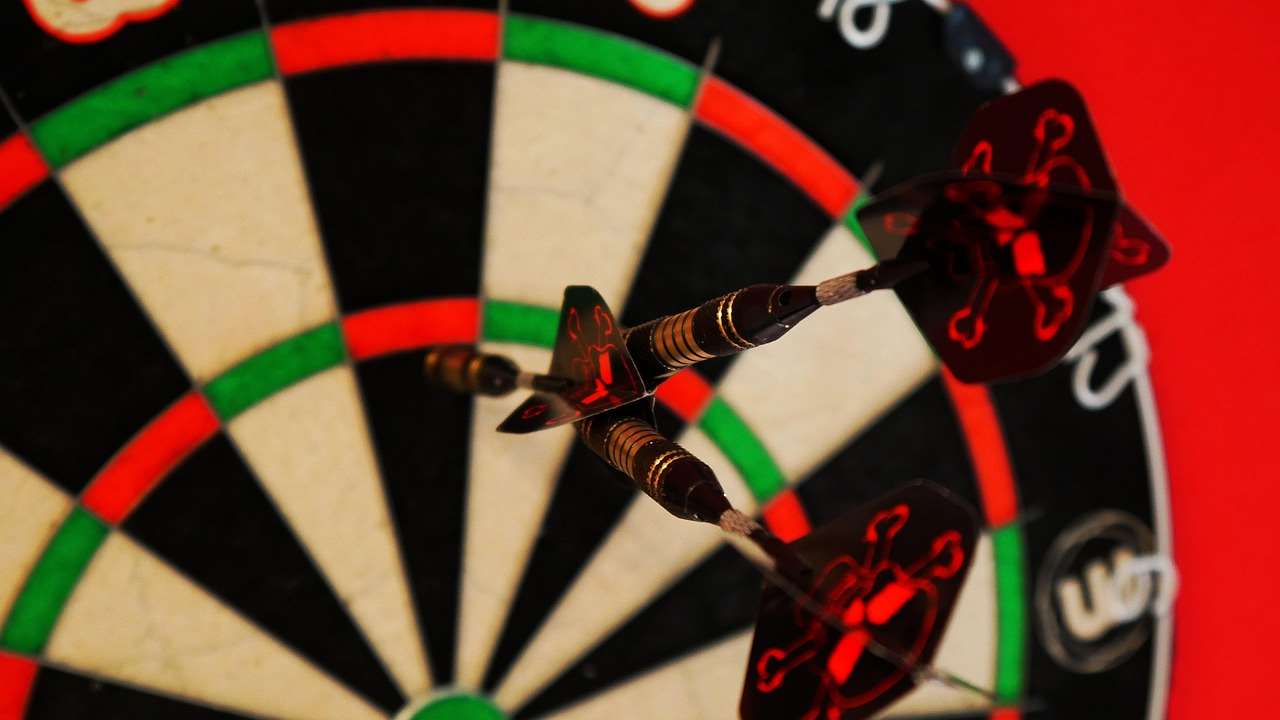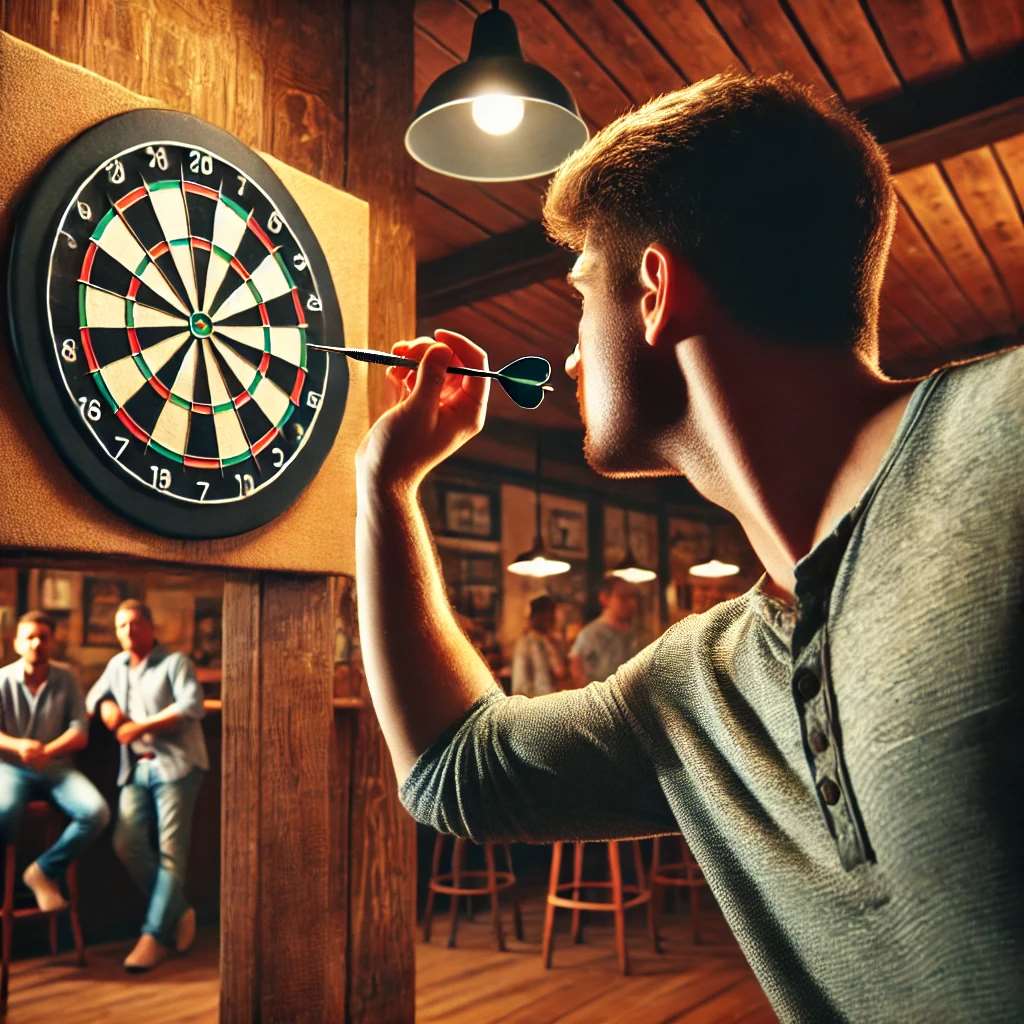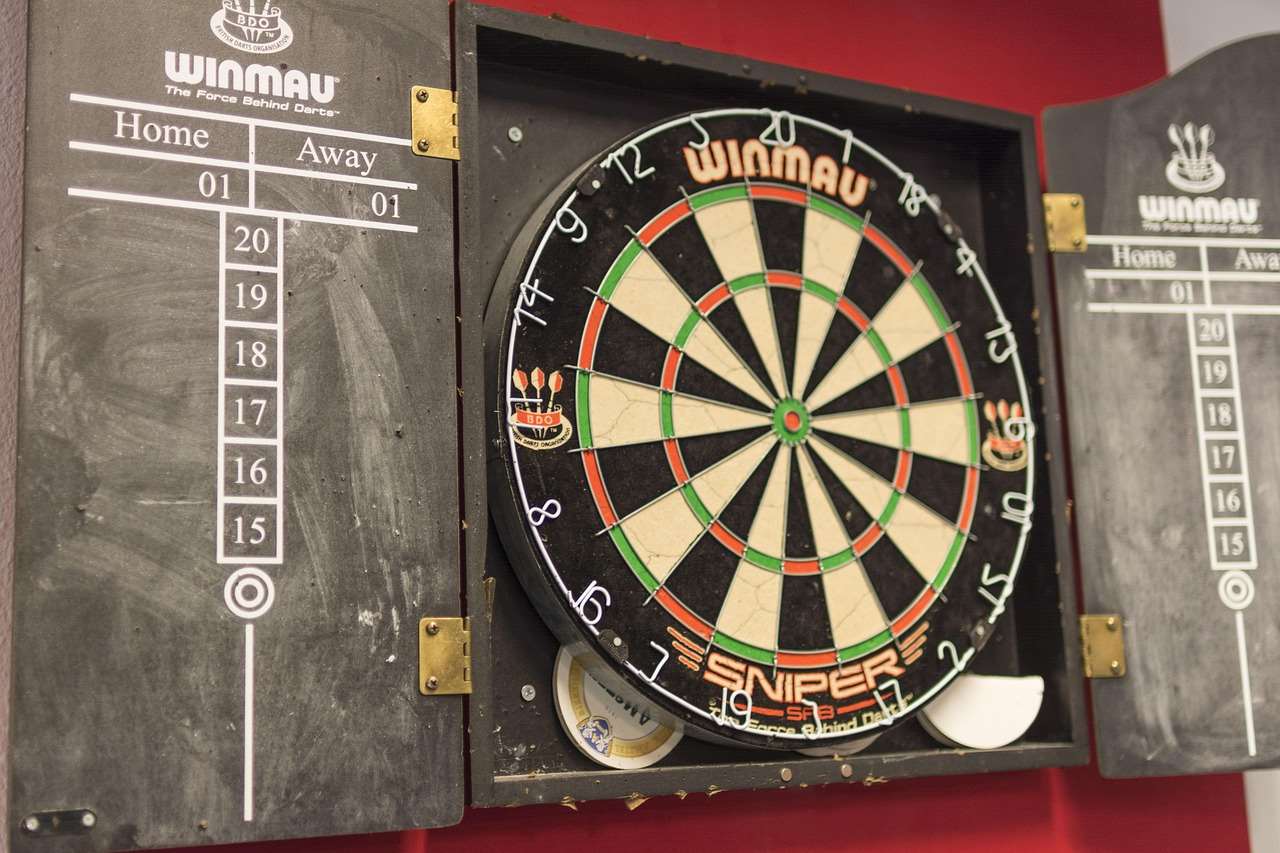Understanding what happens to a dart in flight is crucial for improving your game, and that’s where **dart flight slow motion** comes in; it reveals subtle wobbles, dips, and deviations you’d otherwise miss. This article explores how **slow motion analysis** of your throws can diagnose flaws in your technique and equipment, ultimately leading to greater accuracy and consistency.
⚠️ Still Using Pen & Paper (or a Chalkboard)?! ⚠️
Step into the future! The Dart Counter App handles all the scoring, suggests checkouts, and tracks your stats automatically. It's easier than you think!
Try the Smart Dart Counter App FREE!Ready for an upgrade? Click above!
Unlocking Darts Secrets: The Power of Dart Flight Slow Motion
The beauty of darts lies in its apparent simplicity. However, achieving true mastery requires a deep understanding of the physics at play. Analyzing **dart flight in slow motion** allows you to break down each stage of the throw, from release to impact, and identify areas for improvement. This technique is not just for pros; players of all skill levels can benefit from it.

Why Use Dart Flight Slow Motion Analysis?
So, why is **dart flight slow motion** such a powerful tool? Here’s a breakdown of its key benefits:
- Identifying Wobble: Wobbling during flight is a common issue that significantly impacts accuracy. **Slow motion** reveals the degree and cause of the wobble.
- Analyzing Trajectory: The ideal trajectory is a gentle arc. **Slow motion** helps you see if your dart is diving, climbing excessively, or following an inconsistent path.
- Pinpointing Release Issues: Your release is a critical moment. **Slow motion** allows you to observe how your fingers interact with the dart and whether you’re imparting unwanted spin or movement.
- Evaluating Equipment: Do your darts and flights complement your throwing style? **Slow motion analysis** can help determine if equipment changes are necessary.
By meticulously reviewing **dart flight slow motion** footage, you can gain valuable insights into the mechanics of your throw and make targeted adjustments to optimize your performance. Consider using this technique in conjunction with a dartboard bracket to ensure your board is stable and level, providing a consistent target for your practice.
Common Flight Problems Revealed by Slow Motion
Many common dart throwing problems are nearly invisible to the naked eye. **Slow motion analysis**, however, brings them into sharp focus. Here are some of the most frequently observed issues:
Nose Dive
A dart that **nose dives** sharply indicates an upward release angle that is too steep, or the grip may be too far back on the dart. When you see this in **dart flight slow motion**, you need to focus on adjusting the release angle and grip.
Tail Wag
A **tail wag** from left to right is often caused by an inconsistent or “snappy” release. Players introducing this issue can benefit from reviewing their grip and release technique in **dart flight slow motion**. Practice smoother release motions and maintain a consistent grip on the target darts cult.

Wobbling
**Wobbling** is a general term for any irregular movement during flight and can be caused by a number of factors, including inconsistent grip pressure, poor follow-through, or mismatched equipment. Use **dart flight slow motion** to carefully analyze the wobble and identify its source.
Corkscrewing
**Corkscrewing** describes a spiral motion of the dart during flight, often stemming from an uneven release or an imbalance in the dart’s weight distribution. **Slow motion** helps pinpoint the cause of the rotation and guides adjustments to the throwing motion.
Addressing these issues proactively based on the data gleaned from **dart flight slow motion** is key to improving consistency and accuracy in your game. Remember to focus on one adjustment at a time and track your progress using an application like Dart Counter App (https://dartcounterapp.com/).
How to Record and Analyze Dart Flight Slow Motion
Fortunately, capturing and analyzing **dart flight slow motion** footage is easier than ever. Here’s what you’ll need:
- A Smartphone or Camera with Slow Motion Capabilities: Most modern smartphones offer a **slow motion** recording option. Alternatively, a dedicated camera with a high frame rate will produce even better results.
- A Tripod or Stable Mounting System: A stable camera is crucial for capturing clear footage.
- Good Lighting: Ensure sufficient lighting to clearly see the dart in flight. Natural light is ideal, but artificial lighting can also work.
- Video Editing Software (Optional): If your phone doesn’t offer adequate playback control, video editing software allows for frame-by-frame analysis.
Follow these steps to record and analyze your throws:
- Set up your camera: Position the camera perpendicular to your throwing line, focusing on the flight path of the dart.
- Record your throws: Film several throws from different angles, if possible.
- Review the footage: Play back the footage in **slow motion**, paying close attention to the dart’s trajectory, wobble, release, and impact on the board.
- Identify areas for improvement: Note any inconsistencies or flaws in your technique.
- Make adjustments and repeat: Implement the necessary changes and record new footage to track your progress.

By consistently recording and analyzing your **dart flight slow motion**, you can build a comprehensive understanding of your throwing style and proactively address any weaknesses that might be holding you back from reaching your full potential. Don’t let those small issues impact your next visit to the when is the first darts match tonight; start refining now!
The Role of Equipment in Dart Flight
Your darts and flights play a crucial role in determining **dart flight** characteristics. By viewing your **dart flight slow motion** you can start to understand which elements of your equipment you may want to tweak to perfect your throw.
Dart Weight and Balance
The **weight and balance** of your darts can significantly affect their flight path. Heavier darts tend to be more stable, while lighter darts may be more susceptible to wobbling. **Slow motion analysis** can help you determine the optimal weight for your throwing style.
Flight Shape and Size
Flights come in a variety of shapes and sizes, each offering different aerodynamic properties. Larger flights provide more stability but may also slow the dart down. Smaller flights offer less drag but may be less forgiving of release errors. Review **dart flight slow motion** to see how your flights are affecting stability and speed.

Shaft Length and Material
Shaft length and material can also influence **dart flight**. Shorter shafts shift the center of gravity forward, while longer shafts shift it backward. The material of the shaft (e.g., aluminum, nylon) affects its weight and durability. **Slow motion** analysis can help you fine-tune these parameters to achieve the desired flight characteristics.
Experiment with different equipment combinations and use **dart flight slow motion** to objectively assess their impact on your throw. You might also consider reading about the missile darts currently on the market to stay informed about innovative new technologies.
Advanced Techniques for Analyzing Dart Flight Slow Motion
Once you’re comfortable with the basics of **dart flight slow motion** analysis, you can delve into more advanced techniques to gain even deeper insights.
Frame-by-Frame Analysis
**Frame-by-frame analysis** allows you to meticulously examine the dart’s movement at each stage of the flight. This can be particularly useful for identifying subtle release flaws or evaluating the effectiveness of equipment changes.
Trajectory Tracking
Use video editing software or online tools to **track the dart’s trajectory** over time. This will give you a visual representation of its flight path and highlight any deviations from the ideal arc. By using **dart flight slow motion** you can see these issues with much greater clarity.

Comparing Throws
Record multiple throws with different techniques or equipment setups and **compare them side-by-side in slow motion**. This will help you identify the most effective approaches and fine-tune your game.
These advanced techniques require more time and effort, but they can provide valuable insights for serious players seeking to optimize their performance. Remember, understanding your **dart flight** is key to consistent scoring!
Conclusion: Master Your Throw with Dart Flight Slow Motion
**Dart flight slow motion** analysis is a powerful tool that can unlock hidden potential in your game. By meticulously examining your throws, you can identify flaws in your technique, optimize your equipment, and ultimately achieve greater accuracy and consistency. Start recording your throws today and begin the journey toward mastering your dart game. For further insights into darts scoring, explore how the darts final scoring system works and consider the strategic implications for your game. Remember to practice consistently and enjoy the process of continuous improvement!
Hi, I’m Dieter, and I created Dartcounter (Dartcounterapp.com). My motivation wasn’t being a darts expert – quite the opposite! When I first started playing, I loved the game but found keeping accurate scores and tracking stats difficult and distracting.
I figured I couldn’t be the only one struggling with this. So, I decided to build a solution: an easy-to-use application that everyone, no matter their experience level, could use to manage scoring effortlessly.
My goal for Dartcounter was simple: let the app handle the numbers – the scoring, the averages, the stats, even checkout suggestions – so players could focus purely on their throw and enjoying the game. It began as a way to solve my own beginner’s problem, and I’m thrilled it has grown into a helpful tool for the wider darts community.